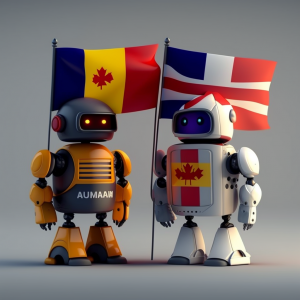Language/Multiple-languages/Culture/Can-AI-eliminate-the-need-for-language-learning
As technology continues to advance, artificial intelligence (AI) is becoming increasingly prevalent in many areas of our lives, including language learning. In recent years, AI has been used to create language learning apps, chatbots, and virtual assistants that can help learners improve their skills in a convenient and personalized way. However, the question remains: Can AI eliminate the need for human language teachers altogether? In this article, we will explore the potential of AI in language learning and discuss the advantages and limitations of using AI. We will also emphasize the importance of balancing the benefits of AI with the value of human interaction in language learning.
Advantages of AI in Language Learning
One of the main advantages of AI in language learning is its ability to provide personalized learning experiences. AI-powered language learning programs can analyze learners' strengths and weaknesses and provide them with targeted feedback and content. Additionally, AI can provide learners with instant feedback, allowing them to correct their mistakes and improve their skills more efficiently. AI-powered language learning can also be more convenient for learners who are unable to attend traditional language classes due to time or location constraints. Some successful AI-powered language learning programs include Duolingo, Babbel, and Rosetta Stone.
Limitations of AI in Language Learning
Despite its many advantages, AI has some limitations when it comes to language learning. One of the biggest limitations is the lack of emotional intelligence and cultural nuances. Language learning involves not just memorizing words and grammar rules but also understanding the cultural context and nuances of the language. AI may not be able to provide learners with the same level of cultural immersion and sensitivity that a human language teacher can. Furthermore, AI may not be able to handle complex conversations or negotiations that require human-level language skills.
The Role of AI in Language Learning
While AI may not be able to replace human language teachers entirely, it can still play a significant role in language learning. AI can complement human language teachers by providing additional resources, feedback, and support. For example, AI-powered chatbots can help learners practice their conversation skills, while AI-powered virtual assistants can provide learners with instant translations and explanations. Additionally, AI can enhance language learning in various settings, such as schools, workplaces, and online platforms. AI-powered language learning can help schools and organizations provide language education to a broader audience and help learners achieve their language goals more efficiently.
In conclusion, AI has the potential to revolutionize language learning by providing personalized, convenient, and efficient learning experiences. However, it is essential to balance the benefits of AI with the value of human interaction and communication in language learning. Human language teachers can provide learners with emotional intelligence, cultural immersion, and complex language skills that AI may not be able to replicate. Therefore, the future of language learning is likely to involve a combination of AI and human interaction. It is up to researchers, educators, and learners to explore the possibilities of AI in language learning and use it in a way that enhances, rather than replaces, human language teachers.

